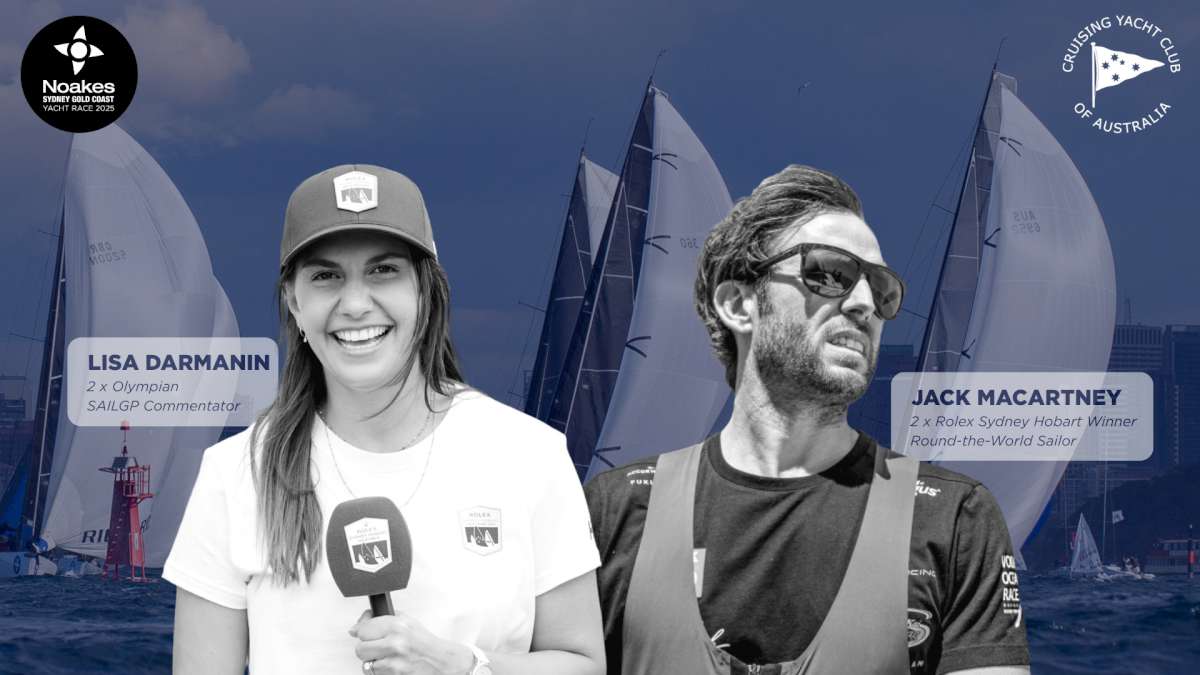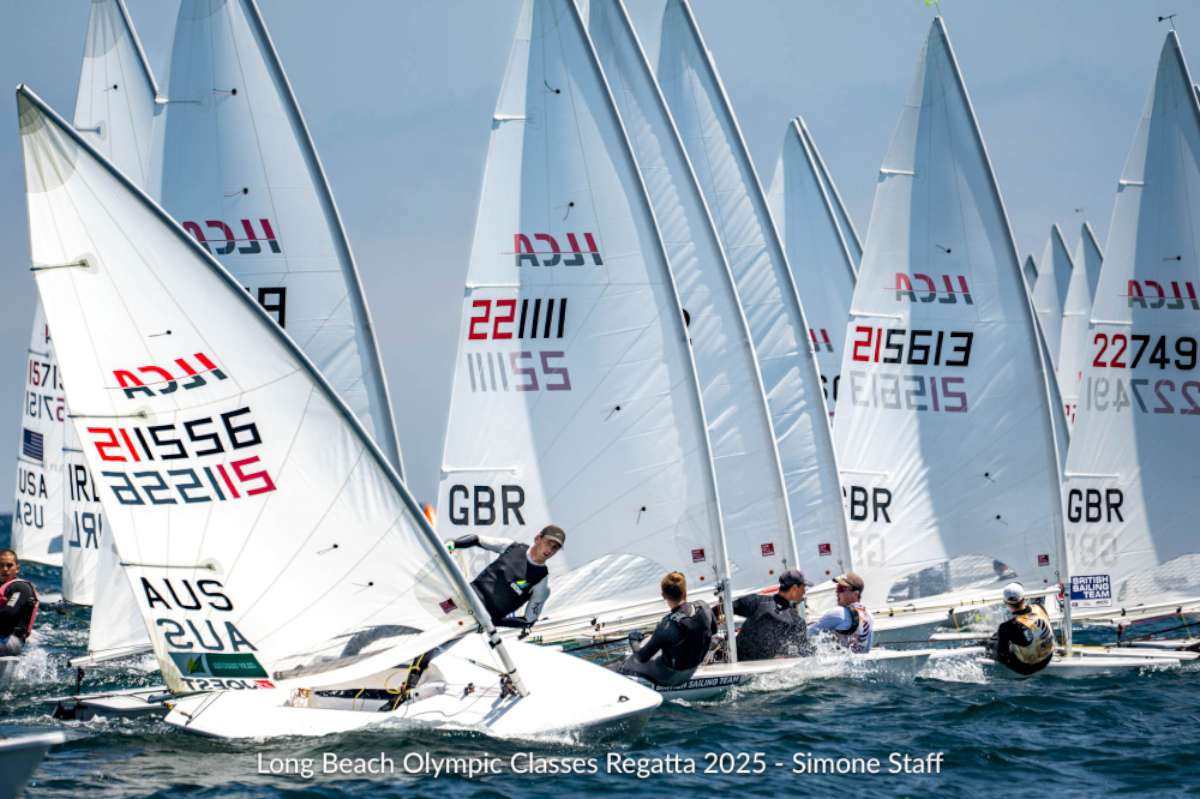Wild Oats XI's new rig reinvents old technology, by Bob Ross.
CONTINUOUS carbon fibre rigging construction, the latest measure to reduce weight and windage aloft, was demonstrated effectively by both line honours winner Wild Oats XI and Tattersall's Cup overall IRC handicap winner Rosebud in the 2007 Rolex Sydney-Hobart race.
New Zealand mast maker Southern Spars fitted the masts of both yachts with its Element C6+ continuous carbon shrouds, a fairly recent development by Southern Spars' specialist division Composite Rigging Ltd of its Element C6 carbon composite rigging.
Element C6 cables are constructed of a bundle of small-diameter pultruded carbon fibre rods utilising Toray's T800 intermediate modulus fibre.
The bundled carbon rods can be jacketed within a number of materials including reinforced neoprene and Spectra, aramid, polyester and stainless steel braiding to protect them from chafe and impact.
The high fatigue tolerance, stability under environmental exposure and exceptional strength-to-weight ratio make carbon composites suitable for standing rigging as well as for mast tubes and fittings.
Composite Rigging's patented terminal process overcame the issues of stress concentrations and scalability that upset early attempts at using carbon rods in standing rigging.
Composite installed the first full set of EC6 rigging on the Farr 52 Georgia in 2003 and has since installed it on a variety of boats ranging from 30ft sports boats to 50 metres-plus mega yachts.
Carbon rigging's major advantage over PBO, previously seen as the best option for big-yacht rigs, is that it is essentially inert environmentally, while PBO has issues with exposure to light and moisture. It is slightly more expensive but still in the same ball park as PBO.
PBO about five years ago replaced stainless-steel Nitronic 50 rod rigging as the first choice for superyachts, offshore maxis and Volvo racers. It is a continuously wound very long fibre coming from a class of high-performance polymers called PBZs. It has the highest cut resistance of any known polymer, is stronger than steel, has extremely low stretch and no creep. It offered an 80 per cent reduction in weight over nitronic rod with only a marginal increase in diameter and was 50 per cent stronger.
Element C6 rods of equivalent stiffness were larger and offered 14 per cent more drag than PBO. But then came the EC6+ upgrade five years ago which negated that PBO advantage by making the shrouds continuous for a reduction in both weight and windage through eliminating the spreader tip connection hardware and burying the connection tangs and adjustment terminals for the intermediate diagonals within the mast wall.
Harness strength
In a tyContinuous rigging is not new. Ocean racers used it in the 1970s and early 1980s, with each diagonal stainless-steel rod terminating separately at the deck. But it's reincarnation with EC6+ by bundling all the rods together in a “harness”.
The harness is constructed from the top down with each diagonal joining the bundle of the ones above it in a single bundle between the spreader ends. To address the elongation problem and to increase the fatigue life of the spreader tip, the carbon rods are encased in an epoxy matrix, which essentially creates a single solid rod. A reinforced composite spreader end completes the spreader tip intersection and builds in the correct bend angle for each stay.
To ensure that each fibre rod is evenly loaded the continuous rigging harness is assembled in a jig in the factory that lays out the entire mast and spreader configuration full size. The constituent rods then run from tang to spreader tip to bottom terminal along a path that takes into account changing arc lengths through the thickness of each bundle.
With all the load-carrying rods bundled together, only one lower end termination is needed, plus a separate one for each lower. The intermediate diagonals are adjusted with a special cone spanner that is slid up inside the mast to engage the turnbuckles.
Composite claims a rigging drag reduction of about 12 per cent for EC6+ over PBO based on the results of independent laboratory testing. The study of the results said that the extra drag of the PBO rig was “equivalent to the aerodynamic drag of a man with snug-fitting clothing standing side on to the apparent wind”.
It says: “Even though the smaller PBO rods gave a drag reduction over the EC6 rods, this was outweighed by the bulky junction of the PBO outboard ends and their exposed turnbuckles.”
Having no spreader tip connections has the added benefit of being able to reduce the spreader tip size to the absolute minimum. This is very obvious on the new EC6+ rig on Wild Oats XI, which replaced the mast rigged with PBO that broke during the Rolex Maxi Cup at Porto Cervo last September.
Wild Oats' rig
Southern Spars designed and built the new rig in only three months. Delivery in early December gave Wild Oats XI just enough time to tune it for the Hobart race. While the 44m long mast looks nearly identical to the old one, with the same section size and five sets of spreaders, complete with rigging it is 80kg lighter.
Laminate design, using an ultra high modulus hybrid, accounted for a ten per cent saving in tube weight compared to the old mast. Southern Spars design engineer Irving Wallace says: “Optimising the laminate design is a fine balance between deciding on what modulus fibre to use and in what orientation.
“The real performance gains come with calculating the exact quantity of laminate to achieve optimal inertias while keeping the high stress areas within the materials' critical limits; the high stress areas being the masthead, hounds, gooseneck and around penetrations through the mast.”
Wallace says the change to EC6+ continuous carbon rigging created some key performance gains, such as a very high strength to weight ratio, high fatigue tolerance and minimal creep. The exterior of the mast is free of any fittings as each EC6 diagonal runs from inside the mast over any number of spreaders to the bottom.
Six internal halyards use an advanced locking system, designed without chafe guards to keep friction and weight to a minimum and create less wind disturbance around the halyard areas. The system has a trip line to ensure the lock easily engages and disengages. The two Code Zero halyard locks have a 15-tonne safe working load and 30-tonne break load.
Skipper Mark Richards says the Wild Oats team is extremely happy with the continuous carbon rigging. “It's a bit like the old days with no spreader end fittings.
“Obviously windage is a huge deal for us and now we have a very clean looking rig. We have no idea how long it last but it is some time. Southern Spars are saying indefinitely.”
Richards said that with North Sails working in conjunction with Southern Spar, the rig's mast/sail combination was virtually tuned in a computer. The initial se up had been time consuming, although only one or two adjustment turns were still needed on some elements on the huge rig.
“That is the most beautiful rig in the world right now,” says Richards. “But it's expensive.”
Durability
Composite Rigging says that unlike PBO or aramid fibres, which suffer strength degradation when exposed to the elements, carbon fibre is materially unaffected by moisture or sunlight. So it is able to supply cables with no jacketing for additional weight- and diameter reduction.
Chafe tests have shown the carbon fibres to be as tough as the encasing jacketing. Should the jacket be damaged the structural rods are able to withstand additional abrasion and can remain exposed if necessary.
Unlike wound fibre cables, which can unravel, the EC6 cable retains the strength of each constituent rod that remains intact if there is damage to the strength elements. The bundled construction allows the cable to dissipate energy from impacts, from such things as spinnaker poles.
The downside is that if a span of cable in one of the EC6+ harnesses is so damaged that is has to be replaced, the entire harness must be replaced.
Sean Langman, offshore sailor and proprietor of Noakes Rigging took a keen interest in the continous carbon rig system while the rigs of both Wild Oats XI and Rosebud were being installed at Woolwich Dock, in Sydney.
“I think it's a beautiful thing,” he said. “It is far tidier than anything else and seems to make perfect sense. It is a development of what has been done with running rigging for some time. They (Composite Rigging/Southern Spars) did a lot of work on it before they released it.
“From what I can see and understand you can get the windage down a bit because it has better stress characteristics. Future sailing boats will have less and less rig drag. And in that, this has it all over PBO.”
Rolex Sydney-Hobart race winner Rosebud clears Sydney, bound for Hobart. Note slim spreaders, made possible by the continuous carbon rigging (Bob Ross)
Element C6 cables are constructed from a bundle of small diameter carbon fibre rods. The special terminating process is patented.























